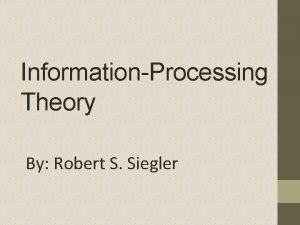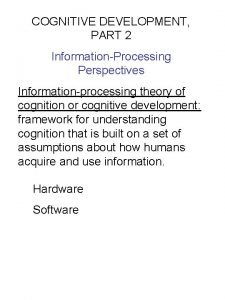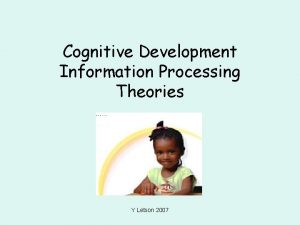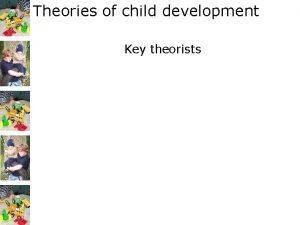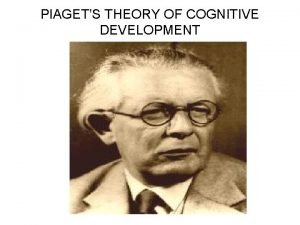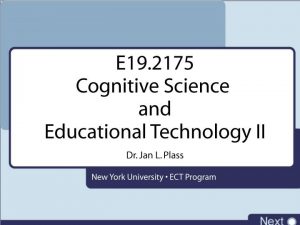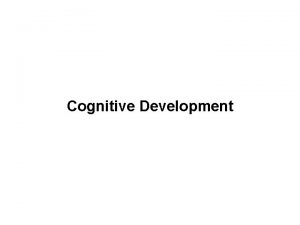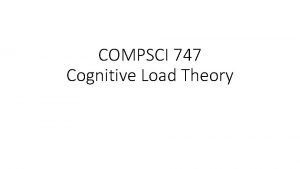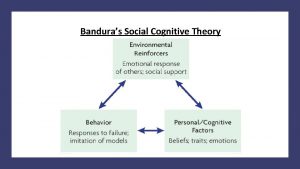High ScopePiagets Theory of Cognitive Development Nature and






- Slides: 6

High Scope-Piaget’s Theory of Cognitive Development Nature and Nurture

The principals and ideas of High Scope v Children develop norms through efforts of interactions with their peers (Poulin-Dubois, 2011). v Nature and nurture compliment each other v Education and Psychology go hand in hand (Poulin-Dubois). v Cause and effect learning takes place in an environment that welcomes play (Estes & Krogh, 2012). v Each child is unique (Estes & Krogh).

• Teaches planning- then doing- then reviewing. Reflection of what was learned helps children process their ideas (Estes & Krogh). • Cause and effect learning leads to competency (Estes & Krogh) • Children are found to have Higher lifetime earnings and lower criminal activity (Nores, 2005). The High Scope Approach is important to understand benefits children in many ways. • The frequency of thought patterns also adapt to its surroundings (Valsiner, 2005). Biological and environmental opportunities lead to logic • Childhood curiosity help teachers make the curriculum to enhance learning (Estes & Krogh).

Piaget and High Scope compliment each-other and a combination of the two can create effective teachers. q Teachers like students learned to comply to the norms of the High Scope program and compliance of the teachers was associated with higher testing scores for children (Palenzuela, 2004). This can be interoperated in terms of children being less likely to learn in an environment met with conflict of interests q Learner and teacher initiated activitiesallows for an open framework curriculum. q Collecting data on children allows for researchers to realize patterns and teachers to observe children's behaviors in efforts to better educate them.

Piaget and High Scope are top of the list! Nature and Nurture is not a battle but a set of biological and environmental causes that create an outcome. We all start out as children and our chemical make up and the way we live our lives plays major factors in what we become in life. Every day, every aspect has a way of affecting the way we think and act. Children are like mold and what we teach them they will act upon. Genes and environments work together interactive (Nature and Nurture, 2004). We are born with certain genes and it is up to our early caregivers and teachers to help nurture these genes for the greatness to grow.

Piaget and the High Scope Program Similarities. Both involve active participation for positive results. Both are focused on concepts which can be called schemas. When learning new information children place this info into existing schemas this is called assimilation. When children cannot make the new information fit into existing schema they adapt and form new schema this process is called accommodation (Estes & Krogh). Both study the formation instead of focusing on the end product which makes adaption easier (Kamii, 1996).
 Cognitive and non cognitive religious language
Cognitive and non cognitive religious language Jerome bruner cognitive theory
Jerome bruner cognitive theory Robert siegler information processing theory
Robert siegler information processing theory Information processing theory of cognitive development
Information processing theory of cognitive development Information processing theory of cognitive development
Information processing theory of cognitive development What is gesell's theory of development
What is gesell's theory of development Outline piaget's theory of cognitive development
Outline piaget's theory of cognitive development


